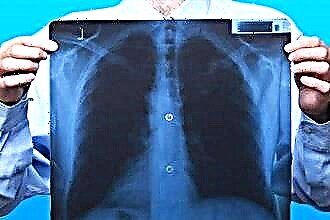After the onset of menopause, the restructuring of the female body begins. A decrease in estrogen levels leads to a gradual decline in reproductive function. In 85% of the fairer sex, this process is accompanied by unpleasant symptoms, and the quality of life decreases. I propose to figure out together why the work of the cardiovascular system is disrupted during menopause.
How menopause affects heart rate
The high level of estrogen in a young woman provides protection - prevents the development of ischemia, promotes the absorption of vitamins and minerals that affect the functioning of the heart and nervous system. Deficiency of sex hormones is manifested in the following:
- Low-density cholesterol rises, which can be deposited on the vessels in the form of plaques. According to research data, its increase is from 10 to 15%, the general indicator of this substance rises by 5-10%, and triglycerides in the blood increase by 11%. The risk of developing atherosclerosis and coronary heart disease increases.
- Disruption of fat metabolism leads to their deposition in the body. Often, after the onset of menopause, a woman develops obesity, and then type II diabetes. Increased glucose levels also increase the risk of heart and vascular disease.
- Due to changes in the water-salt balance and insufficient absorption of trace elements (potassium, magnesium, calcium), arrhythmia appears.
- The menstrual cycle stops, the blood thickens, and the likelihood of blood clots increases.
- Deviations in the system of nervous regulation, for which estrogens were previously responsible, lead to autonomic crises and vascular spasms, an increase in pressure. Attacks are accompanied by pain in the head and behind the sternum, palpitations often develop during menopause, and the risk of stroke and heart attack increases.
95% of women who come to see me are over 45 years old. Complaints of pain in the heart in younger people are usually caused by vegetative-vascular dystonia, neuroses. About 1% have myocarditis.
For more information on what VSD is and how to deal with it, see the video at the link below.
Menopause symptoms
Intensive hormonal changes, a decrease in the influence of estrogens are often accompanied by the so-called hot flashes, irritability, depression, pressure fluctuations, arrhythmias and tachycardia.
Tides
A symptom complex in which ladies experience a sensation of heat, or a hot wave, is called the tide. This phenomenon is observed in the first months, and sometimes years after the cessation of regular menstruation. Signs appear with varying intensity, but usually come down to the following sensations:
- a hot wave or heat arises sharply in the upper part of the body (chest, head, neck), can spread throughout the body;
- there is profuse sweating, increased heart rate, increased blood pressure;
- shortness of breath, a feeling of fear or severe weakness occurs;
- at night this phenomenon is accompanied by insomnia;
- the frequency of attacks varies from several times a day to 10–20 times a month.
As the observations of scientists in many countries show, tides after the cessation of menstruation are noted everywhere. But if in Europe 70% of women suffer from them, then in Asia - only 5-15%.
The reasons for the appearance of hot flashes are still not reliably known. There are theories that thermoregulation is impaired due to constant fluctuations in estrogen levels, which act as stimulants in a specific area of the hypothalamus. Disorder of the autonomic nervous system, a decrease in the activity of the adrenal cortex is also important. Factors provoking hot flashes and palpitations with menopause:
- the predominance of fatty foods in the diet;
- alcohol, drug and smoking;
- neurosis, stress;
- mental characteristics (tendency to mood swings).
Tachycardia
Irregularity of the pulse and an increase in the frequency of heart contractions occur due to fluctuations in hormones. Estrogens cease to perform a protective function, therefore menopause and tachycardia are often associated. According to my observations, more often this occurs in the form of paroxysms, when, after overstrain or even for no apparent reason, the pressure rises, and the pulse reaches 100-130 beats. Less often, there is a steady increase in frequency and hypertension, as well as orthostatic manifestations - when changes occur with a sharp transition from a horizontal position to a vertical one or vice versa. The whole set of changes that occur in the heart during hormonal changes are often called dyshormonal cardiomyopathy by cardiologists.
If, against the background of the onset of menopause, you develop chest discomfort, we recommend reading the article "Pain in the heart with menopause".
How and what to treat
Depending on the causes and characteristics of the manifestation of symptoms, I recommend a specific treatment regimen for arrhythmias and tachycardia in menopause in women. It is important that often paroxysms can be eliminated on their own, but this should be done correctly.
At home
You can try to cope with the attack yourself:
- calm down, sit down or lie down, take sedatives;
- provide air access, ventilate the room, unfasten the pressing parts of clothing;
- take a deep breath, hold your breath and then exhale slowly;
- press on the eyeballs and release, repeat 3-5 times;
- dip your face in cold water for a few seconds.
The doctor is called in such cases:
- against the background of an attack, pain occurs behind the sternum;
- dizziness, weakness appears, darkens in the eyes;
- pressure drops or rises sharply.
Arrhythmias during menopause can occur as a result of acute myocardial ischemia or cerebrovascular accident. Therefore, you should not take them lightly.
Case from practice
A 56-year-old woman came to the clinic with complaints of palpitations, arrhythmias, a feeling of shortness of breath and increased pressure at the time of an attack. The ECG showed no signs of ischemia; some flattening of the T wave was observed on the posterior wall of the left ventricle, which can be considered as an indirect sign of hormonal imbalance or myocardial dystrophy.
I recommended: sedatives, Remens, Bisoprolal. To prevent seizures - a diet low in animal fats, consumption of mainly protein and plant foods, consultation with a gynecologist-endocrinologist. After two weeks of treatment, the condition returned to normal, and attacks began to occur less frequently. She is currently taking hormone replacement therapy.
Qualified assistance
To relieve an attack, my colleagues and I usually recommend the following drugs:
- "Lidocaine".
- Antihypertensive drugs (beta-blockers "Atenolol", "Carvedilol" work best of all).
- Sedatives, and in case of severe anxiety - tranquilizers or antidepressants with serotonin reuptake.
A good result of treating tachycardia with menopause is given by hormone replacement therapy, which is used by many women around the world. It eliminates heat attacks, rhythm disturbances, protects against the risk of osteoporosis, and prevents cardiovascular diseases.
If you want to know everything about tachycardia, we advise you to watch the video below at the link. Causes, symptoms, diagnosis and signs that it is time to see a doctor - about all this in 7 minutes. Happy viewing!
Expert advice
To prevent the development of tachycardia with menopause, I recommend doing the following:
- follow a diet with the inclusion of dairy and plant foods, seafood (Fig. 1);
- combine physical activity and rest;
- to walk outside;
- do yoga, meditation, relaxation practices;
- if necessary, take hormonal drugs (only under the supervision of a specialist);
- take a course of taking vitamins and minerals from time to time.
During menopause, the likelihood of developing cardiovascular disease is high. Undergo regular examinations (ECG, biochemical blood test to determine cholesterol, tonometry). Get rid of bad habits - smoking and drinking alcohol significantly aggravate the condition during hot flashes and lead to the development of heart attacks and strokes.



